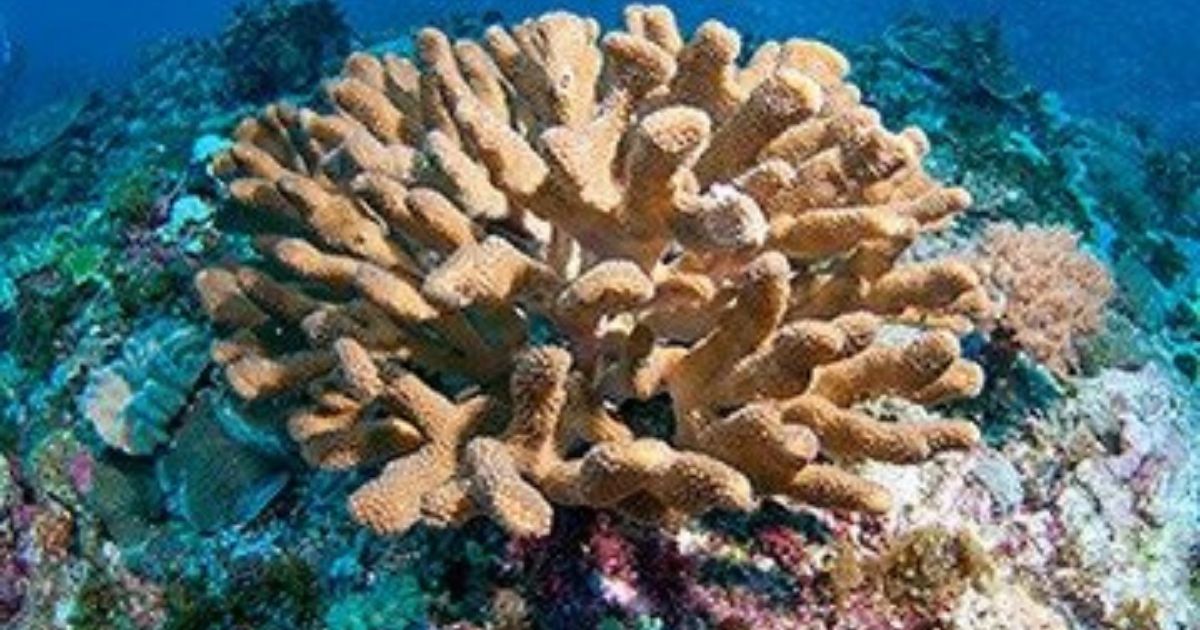Hard corals grow by generating calcium carbonate (CaCO3) from seawater and adding it to their skeletons, where it crystallizes.
This process -- and coral survival -- are threatened by ocean acidification. However, scientists report in the Journal of the American Chemical Society that corals produce the CaCO3 in compartments protected from seawater and not, as previously believed, in exposed locations. The findings, and differing crystallization rates, could explain why some species are more resilient to this threat.
Stony corals extract calcium and carbonate ions from seawater to make CaCO3, which is then attached to the growing skeleton in the form of amorphous particles that gradually harden into the less-soluble "aragonite" crystal structure. Conventional wisdom holds that the particles form and grow in a 2-micron-thick layer of liquid on the skeleton surface known as the extracellular calcifying fluid (ECF). Because of photosynthesis by symbiotic organisms in the coral, the ECF's pH rises in the daytime and then drops again each night. Normally, that wouldn't be a problem, but because it is partly exposed to seawater, the ECF also acidifies to some degree when seawater pH declines. That would interfere with CaCO3 formation and deposition, and kill corals that are most sensitive to a drop in pH, according to Pupa U. P. A. Gilbert and colleagues. If, instead, nucleation and growth of CaCO3 particles occur in intracellular compartments protected from seawater and the ECF -- as Gilbert's group had recently hypothesized -- then even sensitive species could have a chance at surviving acidification, as long as the pH doesn't go too low. The researchers decided to settle this question.
In coral samples, the team detected amorphous CaCO3 particles in a layer of cells that lie above the ECF. This finding is consistent with the growth of the particles inside closed vesicles -- or tiny sacs -- within these cells, the researchers say. That means the particles are formed safely away from seawater and not in the ECF. However, once attached to the growing skeleton surface, they're exposed to the ECF, where they're at risk of dissolving before they crystallize. The team found that crystallization rates vary significantly across species. For instance, the freshly added CaCO3 crystallizes more quickly, and therefore remains soluble for a shorter time, in Stylophora pistillata, a species known to be less vulnerable to ocean acidification.
The authors acknowledge funding from the U.S. Department of Energy, U.S. National Science Foundation and the European Research Council.
By American Chemical Society
Journal Reference:
Connor A. Schmidt, Cayla A. Stifler, Emily L. Luffey, Benjamin I. Fordyce, Asiya Ahmed, Gabriela Barreiro Pujol, Carolyn P. Breit, Sydney S. Davison, Connor N. Klaus, Isaac J. Koehler, Isabelle M. LeCloux, Celeo Matute Diaz, Catherine M. Nguyen, Virginia Quach, Jaden S. Sengkhammee, Evan J. Walch, Max M. Xiong, Eric Tambutté, Sylvie Tambutté, Tali Mass, Pupa U. P. A. Gilbert. Faster Crystallization during Coral Skeleton Formation Correlates with Resilience to Ocean Acidification. Journal of the American Chemical Society, 2022; 144 (3): 1332 DOI: 10.1021/jacs.1c11434



